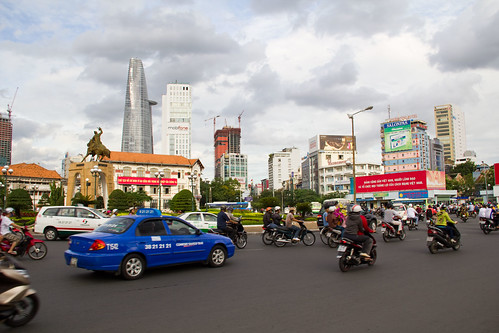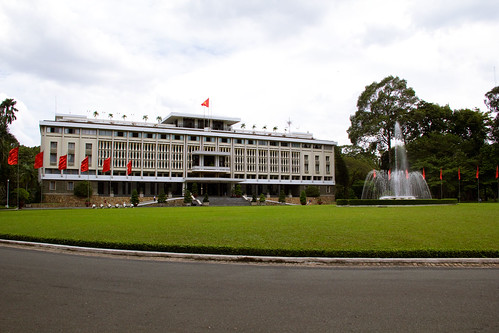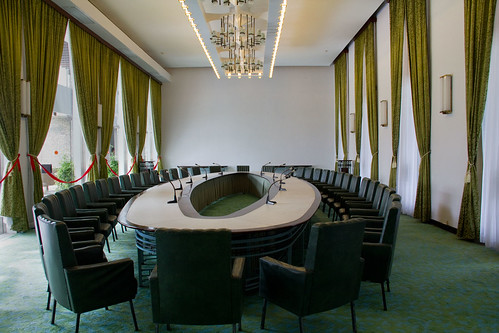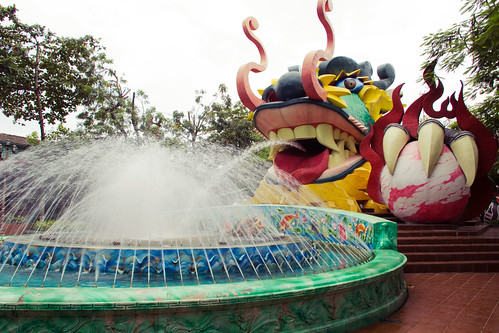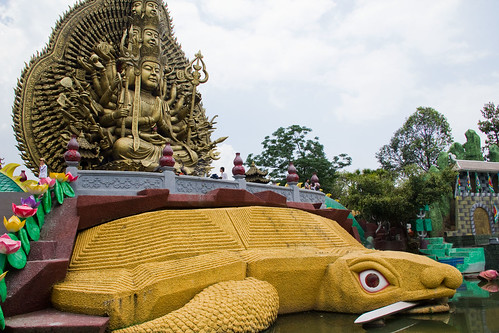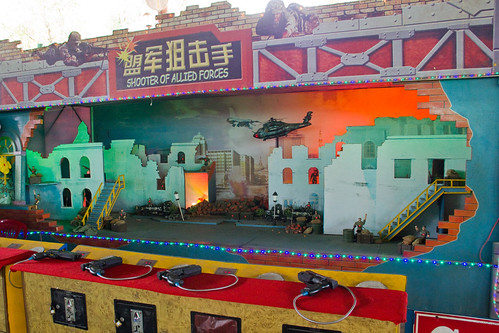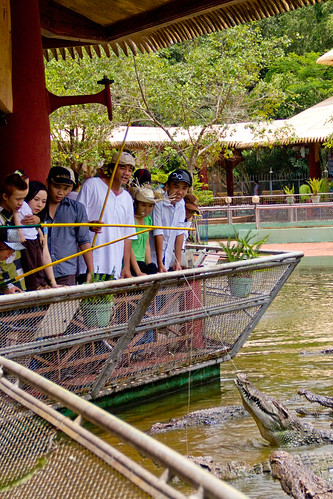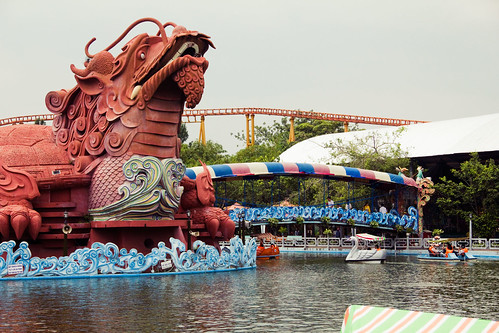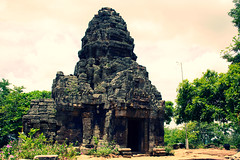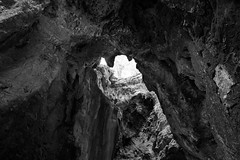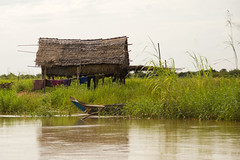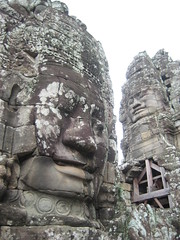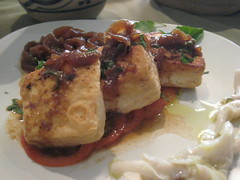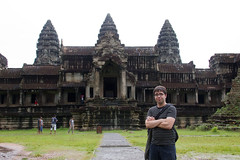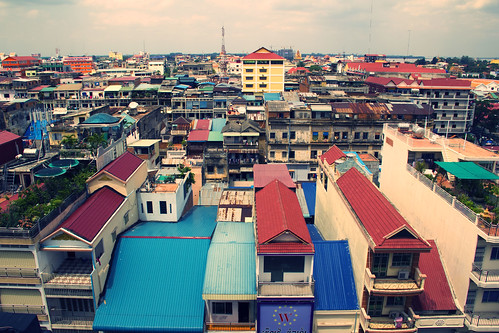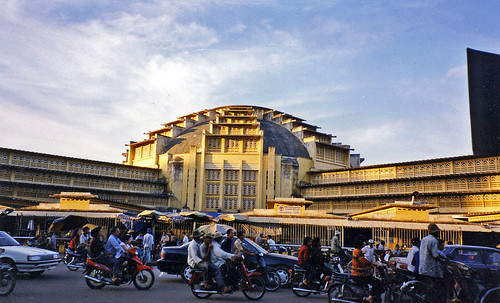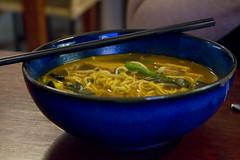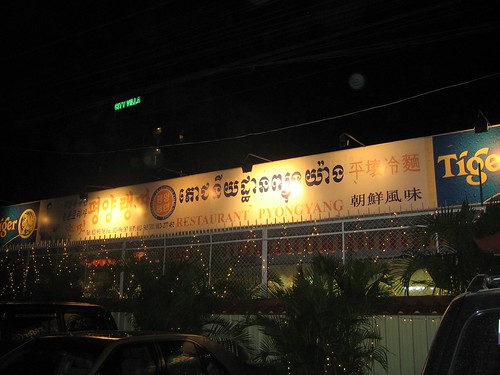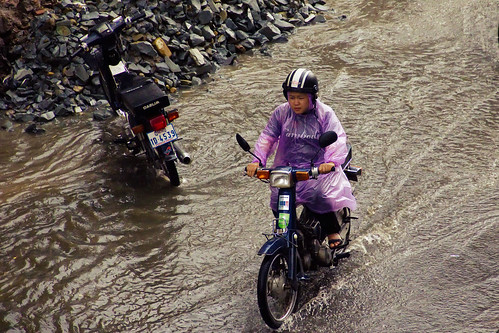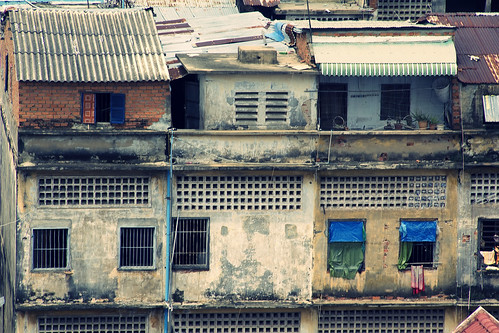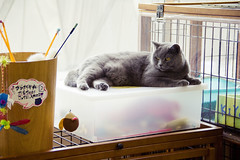
For dinner we walked a ways out to a very local vegetarian restaurant. They had a veganized version of the town's famous dish, a noodle bowl with various "pig" parts that uses special lye containing well water. It was delicious! They also had an amazing array of pre-packaged vegetarian faux meat including pig's ears and snails.
We took another overnight train up to Hanoi. By the time we got there we were quite exhausted. We were expecting the same shocking modernity as we found in Ho Chi Minh City, but Hanoi is still a bit more old fashioned. It's nearly impossible to find a cab that'll go by the meter, so you're forced to haggle for fares - a difficult task when you don't know the true distance. Our hotel was called the "Moonshine Palace." I don't think anyone's told them what moonshine means, at least to Americans. Initially, they put us in a top floor room. Then the rain started coming down fast, and it was falling equally fast through cracks in the ceilings! We showed them the inch of water pooling on the floor and they upgraded us to the "deluxe" room for free.
The problem with having to constantly haggle with people and the rising feeling you're constantly being scammed is that you occasionally end up being stand-offish or rude to the people who are actually being helpful. We went to the bus terminal to get a ride to Cuc Phuong national park and were immediately approached by a crowd of young men trying to sell us bus tickets. We assumed it was a scam, so we went straight to the ticket window. The woman wouldn't sell us a ticket and we couldn't figure out why. Eventually an English speaking woman came out from the back and said we should sit and someone would come sell us a ticket. We did as we were told, but we were still being repeatedly approached by the men we assumed were scammers. Eventually we figured out where the bus was and got on. Then one of the "scammers" got on and charged us the same standard fare as the locals. He ended up being pretty friendly even though we had basically blown him off a bunch of times in the station. As far as I can tell the buses are privately run but the station creates a standard fare, so the companies compete to get more customers.
When we arrived at the station it was time to have yet another adventure in haggling. I thought I had read that a motorbike ride from the station to the park was only 20,000 Vietnamese dong per person. It was pouring so we wanted a taxi. A guy told us he'd take us there for 300,000, which I said was ridiculous. He would only budge to 250,000, which we thought was still a major rip off. We finally give in, but instead of taking us to a cab he sits us down at his shop and he lights up a bong. He offered us some and I can only imagine what kind of scam he runs on tourists that agree. We're there fuming about having to wait for a cab we're overpaying for when we spot a real cab. Of course our "friend" angrily follows us and tells the cab to not take any less than 250,000. We demand 200,000. After much arguing we decide we'll just walk into town and have lunch. When we finally get away from our "friend" the cab drives up and says he'll do it for 200,000. The hilarious thing was that the park station then told us that 250,000 was pretty much the standard fare. It was the first and only time we managed to haggle in our favor, and it was a total accident!
At Cuc Phuong park we rented a lakeside bungalow and spent an energetic evening chasing mosquitos before finding the provided mosquito net. In southern Vietnam and Cambodia it typically only rained for three hours a day, but in the north it seems to rain all day and night and you get about three hours without it. This prevented us from really exploring the park, but we did enjoy the primate rehabilitation center, where we watched langurs and gibbons swing about and make some amazing loud noises. We also completed the steep and extremely slippery hike to the observation tower.

Vietnamese drivers are generally pretty crazy, but the one who took us back to the bus station should win some sort of prize. His method was to push the accelerator all the way down while continuously blaring his horn so that other drivers would get out of his way. He didn't understand that chickens don't know what a horn is, so we had a few near misses. At one point we came upon a man crouched in the middle of the road and our driver actually sped up. His only English was "only in Vietnam!" which he repeated gleefully every time he nearly pushed a scooter or cow off the road. He played us a bizarre radio program intended to teach Vietnamese children English using nursery rhymes. In one of the more surreal moments of my life, he swerved around a herd of cattle while we listened to girls with "The Shining" twins-like voices sing "Jack and Jill". Back in Hanoi, we actually had a hard time figuring out what to do. An incorrectly labeled Google Map prevented us from visiting the Ho Chi Minh mausoleum and seeing his actual body (which is only available in the morning). We did see the Ho Chi Minh Museum, which was rather odd. It has a lot of bizarre sculptures and cars crashing through walls that are supposed to represent Ho Chi Minh's ideas. Then it was an excellent dinner by the train station, and a train ride to the Chinese border.

